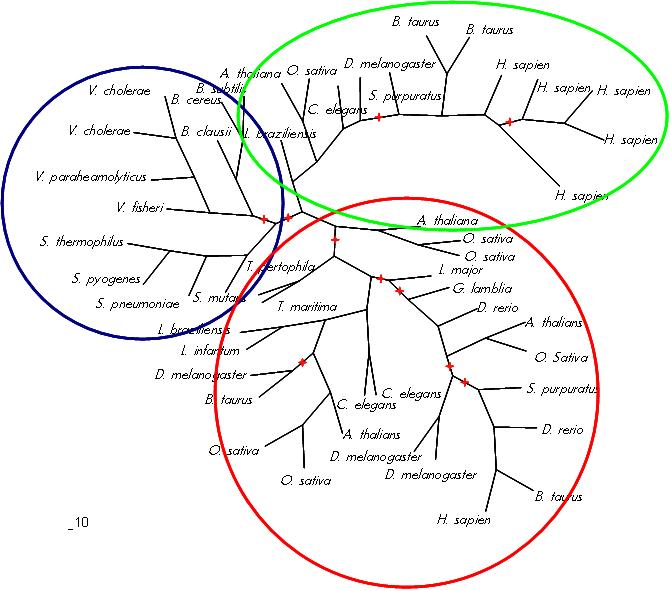TREE: Difference between revisions
From MDWiki
Jump to navigationJump to search
ScottAllen (talk | contribs) No edit summary |
ScottAllen (talk | contribs) No edit summary |
||
| (2 intermediate revisions by the same user not shown) | |||
| Line 1: | Line 1: | ||
[[Image: | [[Image:TREEcircle.jpg]] | ||
Phylogenetic tree of selected model organisms from BLASTP results. All proteins putative GTPases of the YlqF/YawG family. Three groupings are observed, a bacterial group, a eukaryotic group and an archaea-eukaryote group. The lack of a bacterial-eukaryotic grouping indicates that no horizontal gene transfer occurred. Furthermore, the distinct bacterial and eukaryotic clades have previously been hypothesises to indicate that the protein was likely a part of the Last Universal Common Ancestor | Phylogenetic tree of selected model organisms from BLASTP results. All proteins putative GTPases of the YlqF/YawG family. Three groupings are observed, a bacterial group (blue), a eukaryotic group (green) and an archaea-eukaryote group (red). The lack of a bacterial-eukaryotic grouping indicates that no horizontal gene transfer occurred. Furthermore, the distinct bacterial and eukaryotic clades have previously been hypothesises to indicate that the protein was likely a part of the Last Universal Common Ancestor's proteome (Leipe, D. et. al. 2002). Red stars indicate less than 95% confidence in branch determined via 100 bootstraps. | ||
Latest revision as of 23:44, 10 June 2007
Phylogenetic tree of selected model organisms from BLASTP results. All proteins putative GTPases of the YlqF/YawG family. Three groupings are observed, a bacterial group (blue), a eukaryotic group (green) and an archaea-eukaryote group (red). The lack of a bacterial-eukaryotic grouping indicates that no horizontal gene transfer occurred. Furthermore, the distinct bacterial and eukaryotic clades have previously been hypothesises to indicate that the protein was likely a part of the Last Universal Common Ancestor's proteome (Leipe, D. et. al. 2002). Red stars indicate less than 95% confidence in branch determined via 100 bootstraps.
